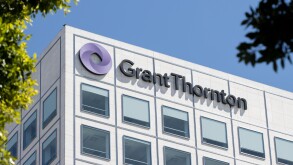
|

|
|
Sean Foley |
Landon McGrew |
The US Treasury Department and Internal Revenue Service recently released final regulations addressing when a foreign corporation's expanded affiliated group (EAG) will be considered to have substantial business activities in a foreign country for purposes of determining whether the foreign corporation is a surrogate foreign corporation within the meaning of the section 7874 anti-inversion rules (TD 9720). The new regulations generally adopt temporary regulations that were issued in 2012 (TD 9592) with certain modifications. As general background, a foreign corporation will be treated as a surrogate foreign corporation with respect to a US corporation (and thus subject to the section 7874 anti-inversion rules) if pursuant to a plan (or a series of related transactions):
The foreign corporation acquires (directly or indirectly) substantially all of the assets of a US corporation;
After the acquisition, at least 60% of the stock of the foreign corporation is owned by former shareholders of the US corporation by reason of their prior ownership of stock in the US corporation; and
After the acquisition, the foreign corporation's EAG does not have substantial business activities in the foreign country in which the foreign corporation is organised.
The 2012 temporary regulations provided a bright-line test for determining whether a foreign corporation's EAG has substantial business activities in the relevant foreign country. Under this bright-line test, an EAG is considered to have substantial business activities in the relevant foreign country only if at least 25% of the group employees, group assets, and group income are located or derived in the relevant foreign country. The final regulations retain this bright-line test, subject to certain modifications described below.
First, the final regulations clarify certain rules for determining the members of a foreign corporation's EAG by providing that an entity that is not a member of the EAG on the acquisition date is not a member of the EAG even if the entity was a member at some earlier point during the testing period. Moreover, members of the EAG are determined by taking into account all transactions related to the acquisition even if they occur after the acquisition date. The final regulations also provide a new partnership look-through rule for determining members of the EAG, and coordinate this rule with the deemed corporation rule which has been retained from the 2012 temporary regulations.
The final regulations also include a modification to the anti-abuse rule in section 7874(c) by providing that any group assets, employees, or income associated with property transferred to an EAG that is part of a plan with a principal purpose of avoiding the purposes of section 7874 are not taken into account in both the numerator and the denominator of each of the substantial business activities tests. Under the temporary regulations, these items were not taken into account in the numerator, but were taken into account in the denominator.
In addition, the final regulations include certain modifications to the application of the specific tests used to determine whether the EAG has substantial business activities, for example whether individuals qualify as employees, when employee compensation is treated as incurred, how mobile assets are treated, and how group income is calculated.
The final regulations apply to acquisitions completed on or after June 3 2015.
The information contained herein is of a general nature and based on authorities that are subject to change. Applicability of the information to specific situations should be determined through consultation with your tax adviser.
This article represents the views of the authors only, and does not necessarily represent the views or professional advice of KPMG LLP.
Sean Foley (sffoley@kpmg.com) and Landon McGrew (lmcgrew@kpmg.com), Washington, DC
KPMG
Tel: +1 202 533 5588
Fax: +1 202 315 3087
Website: www.us.kpmg.com









